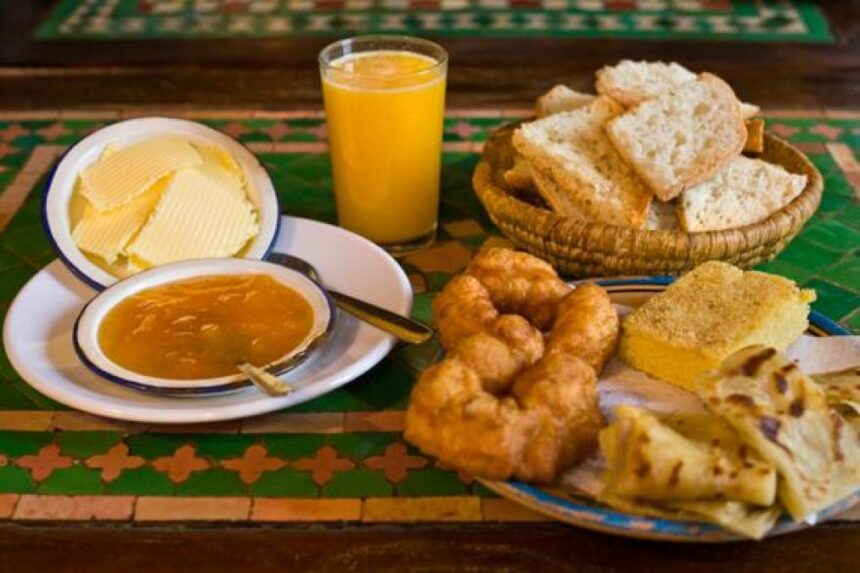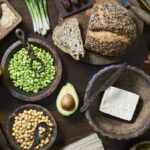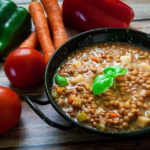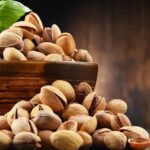Breakfasts can have a thousand and one nuances depending on the area of the world. Even within Spain, traditionally the first meal of the day differs depending on the autonomous communities. They also vary depending on your personal eating pattern: from smoothie bowls to a simple yogurt with fruit, some toast and with or without coffee. In the variety is the spice.
But what would be the most appropriate breakfast if what we are looking for is to lengthen and improve life? According to journalist Dan Buettner, known for coining the concept of “the blue zones” that concentrate the largest populations of centenarians on the planet, breakfast would be a basic pillar for longevity.
As he explains, he usually delays breakfast until almost noon. And his first meal of the day is none other than minestrone soup. This is a typical Mediterranean recipe from one of these ‘blue zones’ very close to Spain, the island of Sardinia.
What is minestrone
According to Buettner, it would be possible to add up to 10 more years of life through healthy habits. These include the consumption of fruits and vegetables, physical activity and home cooking. Minestrone soup is made at home, pre-made preparations are not recommended. You only need a few legumes, potatoes and vegetables, although everyone has their own way of preparing this soup.
Minestrone soup has half the recommended daily intake of fiber, in addition to various subtypes of this nutrient. “Our microbiome has about 100 billion different species of bacteria, and when you give them palatable fiber, they produce short-chain fatty acids, which end up in our bloodstream.” he explains.
“They are capable of reducing inflammation and improving the functionality of the immune system, in addition to collaborating in the production of basic components for the body’s hormones,” he continues. Minestrone soup is a great way to get a wide variety of nutrients in a single dish, something more significant in countries that eat predominantly the ‘Western diet’, which falls short of the recommended intake of fruits and vegetables.
This soup incorporates legumes, potatoes and whole grains such as barley. All of them provide the soup with a significant richness in proteins of plant origin, slowly absorbed carbohydrates and micronutrients such as potassium or magnesium and vitamins such as B6, B9 or folic acid and vitamin C. In addition, homemade versions are usually less rich in sodium (salt) than prepared or canned ones.
Finally, minestrone soup is a great opportunity to reduce food waste, in addition to being an economical option: legumes, whole grains, tomatoes and vegetables. In the latter case, Buettner himself comments that he usually uses leftover cabbage, kale or chard leaves that he has in the refrigerator.
Four tips to do it
Although the ways to prepare a minestrone soup are diverse, any vegetable soup with some potatoes and legumes can fit in the recipe. If we don’t feel like it for breakfast, Buettner advises taking it for lunch or dinner. That said, the journalist offers 4 tips for preparing our own minestrone soup:
Use the ingredients that we like. We can change the beans for chickpeas for example. It is also not necessary to always use potatoes, and you can replace them with cassava or sweet potato. In addition, it is possible to add any spices we want. The essence of this soup is that the ingredients are natural and whole, and not use ultra-processed foods.
Cooking in batches saves time: Another of the author’s tips, applicable to life in general, is to cook in batches and not in units. That is, make several servings simultaneously and save for other days, something that will save us time and effort. It is possible to keep them in the refrigerator if we are going to consume them soon, or freeze them individually in microwave-safe glass containers.
Add healthy fat: Buettner likes to add avocado, Parmesan cheese or olive oil, the favorite option in Spain, although it does not have to be the only one. Likewise, he also advises adding animal protein such as turkey or chicken, if we like it.
Vegetable broth instead of water: Finally, and with the aim of improving the flavor of the soup, Buettner also advises using vegetable broths instead of water, something that will be appreciated by those who find it difficult to hydrate throughout the day. .













